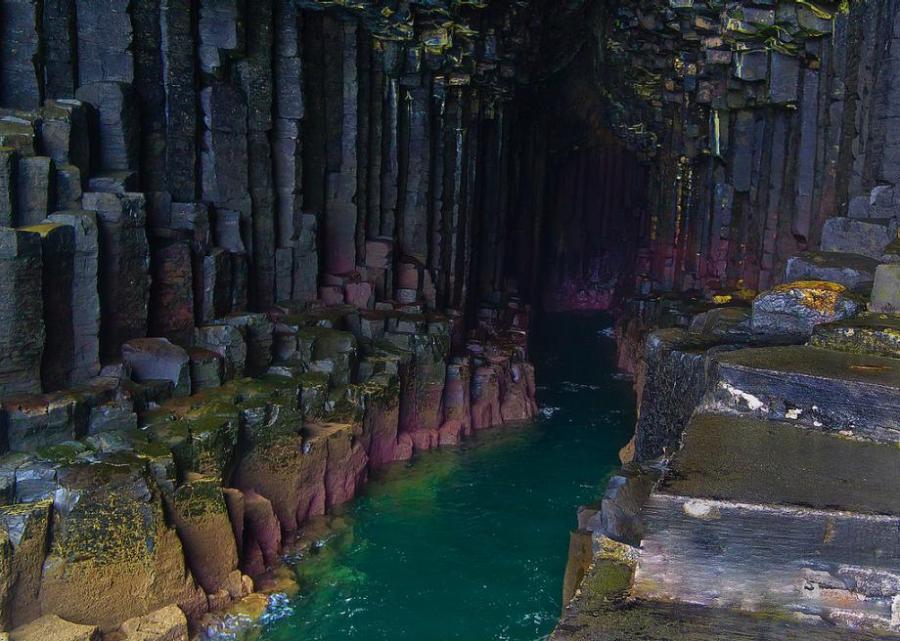By Ella Morton
Atlas Obscura on Slate is a blog about the world's hidden wonders. Like us on Facebook, Tumblr, or follow us on Twitter @atlasobscura.
Like something out of an epic fantasy novel — or maybe The Lego Movie — Fingal's Cave, located on the Scottish island of Staffa, is a 270-foot-deep, 72-foot-tall sea cave with walls of perfectly hexagonal columns.

Celtic legend holds that the cave was once part of a bridge across the sea, built by giants to fight one another. (The other end of the bridge is Giant's Causeway in Northern Ireland, which exhibits the same blocky look.) Science says it formed from enormous masses of lava that cooled so slowly that they broke into long hexagonal pillars, like mud cracking under the hot sun.
When naturalist Sir Joseph Banks rediscovered the cave in 1772, it quickly captured the English imagination and inspired the work of artists, writers, and musicians. Composer Felix Mendelssohn premiered an overture about the cave in 1832. That same year, artist J. M. W. Turner painted a mist-swirled depiction of it.
In the ensuing centuries, the geological feature has continued to inspire — one of Pink Floyd's unreleased tracks from their 1970 Zabriskie Point soundtrack sessions is called Fingal's Cave. Matthew Barney also used the cave as a location in Cremaster 3, a 2002 fever dream of a film that formed part of his Cremaster Cycle art installation.
Visit Slate for more images.